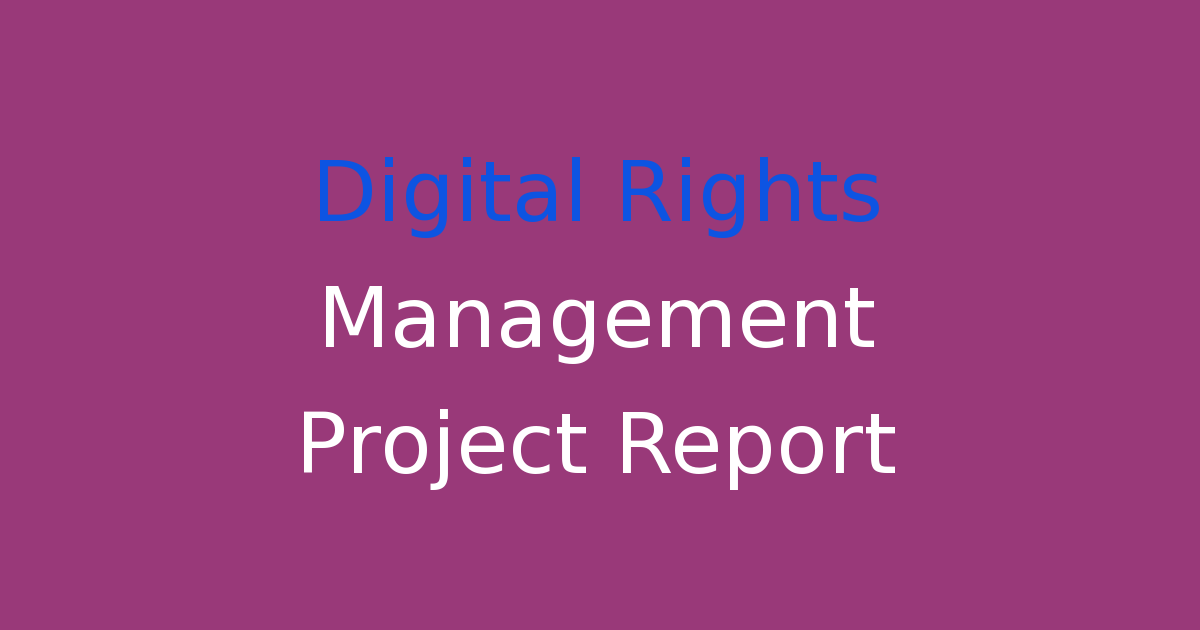Project report on digital rights management.
Introduction
Digital Rights Management (DRM) is a technology that controls access to digital content and protects the rights of the content owners. In today’s digital age, where the majority of content is distributed and consumed online, it is crucial to have effective DRM systems in place to prevent unauthorized use and distribution of copyrighted material. This project report aims to analyze the existing DRM system and propose an improved solution to address its shortcomings.
Problem Statement
The existing DRM system has several limitations that need to be addressed. One of the main problems is that it is not always effective in preventing piracy and unauthorized distribution of digital content. Hackers and pirates have found ways to bypass DRM protections, making it easier for them to illegally distribute copyrighted material. This not only results in financial losses for content owners but also undermines the integrity of the digital content industry.
Existing System
The existing DRM system typically involves encrypting digital content and using a license server to control access to the content. Users need to obtain a license to access the content, and the DRM system validates the license before granting access. However, hackers have developed various methods to crack the encryption and circumvent the license validation process, making it difficult for content owners to protect their intellectual property.
Disadvantages
One of the main disadvantages of the existing DRM system is its vulnerability to hacking and piracy. Hackers can reverse-engineer the DRM algorithms, intercept communication between the client and server, or use software tools to remove the protection altogether. This compromises the security of the content and allows unauthorized users to access and distribute it freely.
Additionally, the existing DRM system can be cumbersome for legitimate users. Users may encounter compatibility issues with different devices and platforms, experience restrictions on how they can use the content, or face difficulties in transferring their purchased content to other devices. This can lead to frustration and dissatisfaction among users, ultimately affecting the success of the DRM system.
Proposed System
To address the shortcomings of the existing DRM system, we propose a new and improved DRM solution. Our proposed system incorporates advanced encryption techniques, robust authentication mechanisms, and secure communication protocols to enhance the security of digital content. We also focus on improving user experience by implementing user-friendly interfaces, seamless integration with various devices and platforms, and flexible usage rights for content consumers.
Advantages
The proposed DRM system offers several advantages over the existing system. It provides enhanced security features to protect digital content from unauthorized access and distribution, reducing the risk of piracy and intellectual property theft. The system also offers improved user experience, allowing users to access and consume content seamlessly across multiple devices and platforms. Additionally, our DRM solution provides content owners with greater control over how their content is used and distributed, enabling them to maximize their revenue and protect their rights effectively.
Features
Some key features of our proposed DRM system include:
– Advanced encryption algorithms to secure digital content
– Secure license management system to control access to content
– Multi-platform compatibility for seamless content distribution
– User-friendly interfaces for easy navigation and usage
– Flexible usage rights for content consumers
– Robust authentication mechanisms to prevent unauthorized access
– Real-time monitoring and reporting tools for content owners
– Customizable settings for content protection and distribution
Conclusion
In conclusion, the proposed DRM system offers a comprehensive solution to the challenges faced by the existing DRM system. By leveraging advanced encryption techniques, secure authentication mechanisms, and user-friendly interfaces, our DRM solution aims to provide content owners with greater security and control over their digital content. Through effective implementation and continuous improvement, we believe that our proposed system can contribute to the growth and success of the digital content industry while protecting the rights of content owners and consumers alike.

